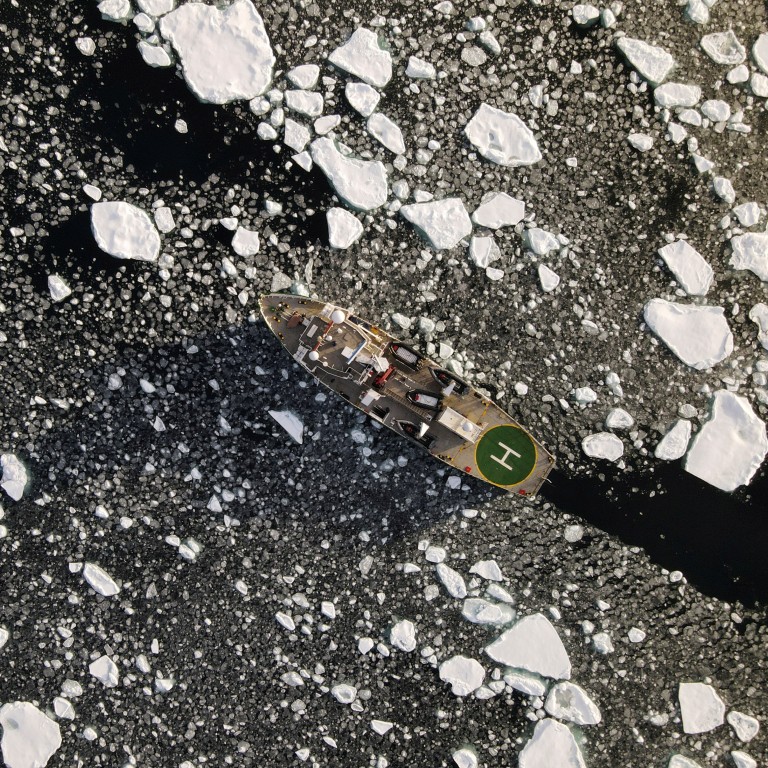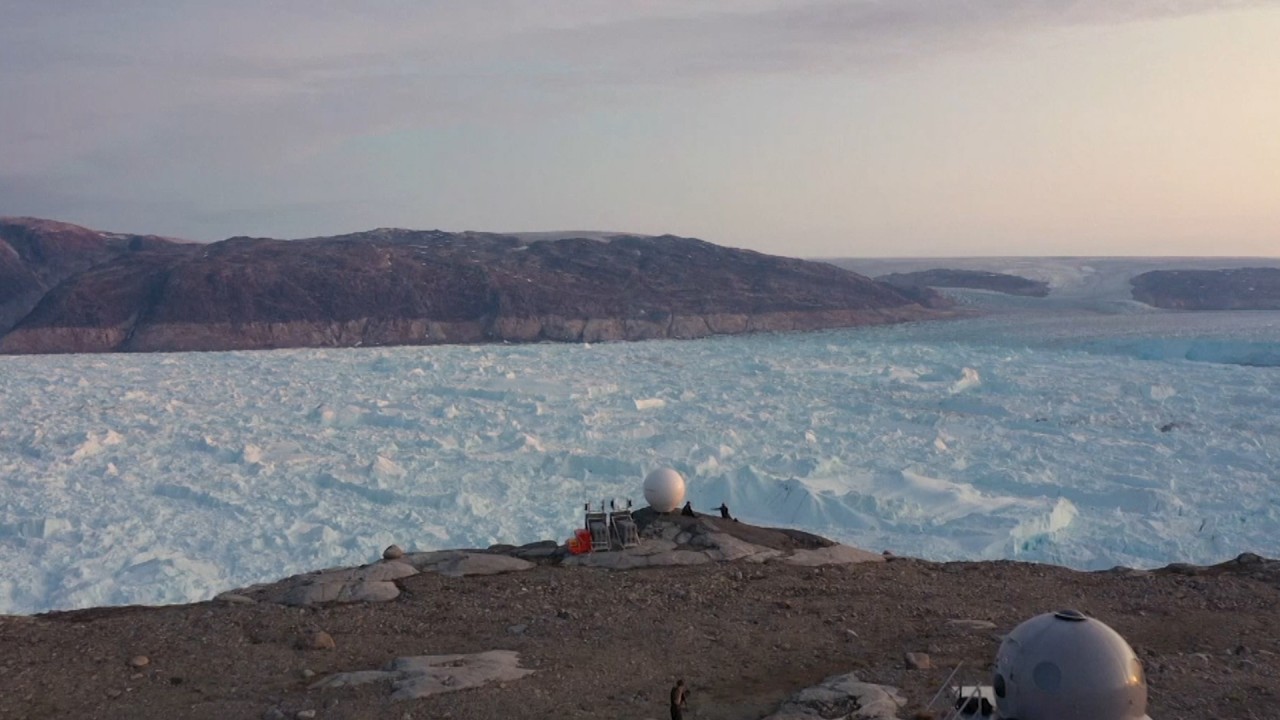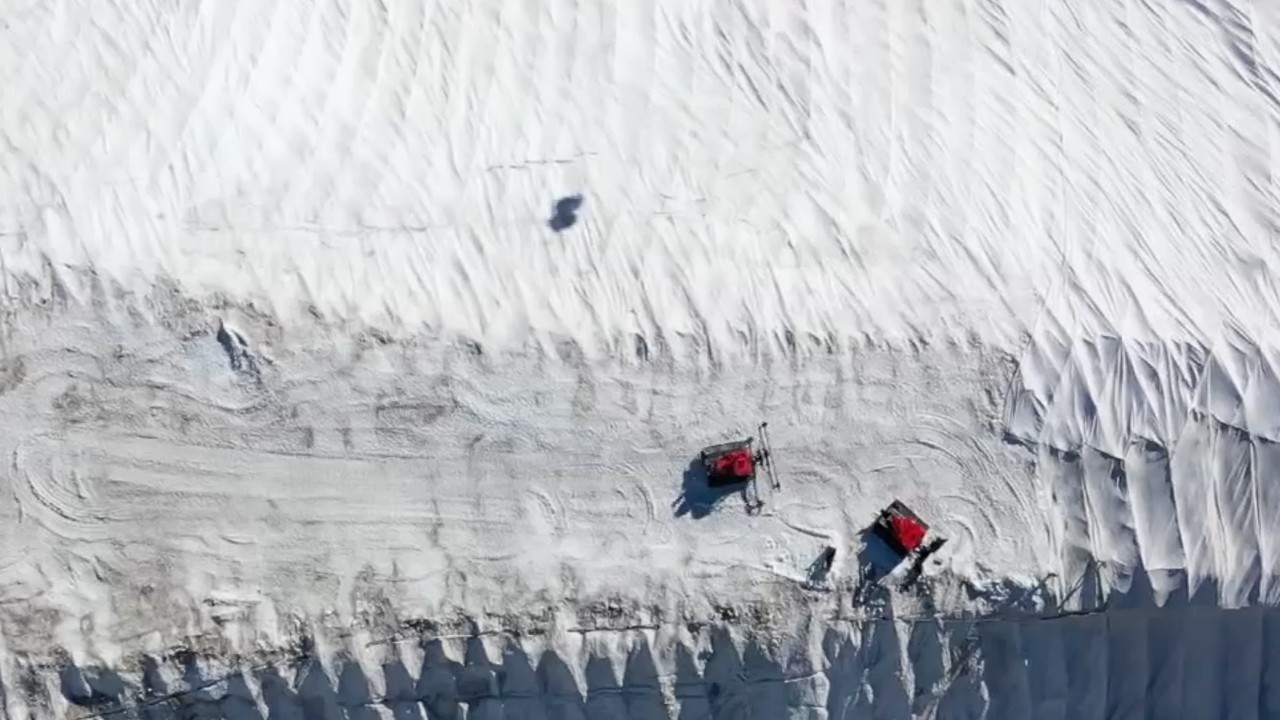
‘Devastating’: Arctic sea ice is second lowest on record
- US scientists offer further stark evidence of the impact of global warming
- ‘We are headed towards a seasonally ice-free Arctic Ocean’
Warming in the Arctic shrank the ice covering the polar ocean this year to its second-lowest extent in four decades, scientists announced, yet another sign of how climate change is rapidly transforming the region.
Satellites recorded this year’s sea ice minimum at 3.74 million sq km (1.4 million square miles) on September 15, only the second time the ice has been measured below 4 million sq km in 40 years of record keeping, said researchers at the National Snow and Ice Data Center (NSIDC).
“The year 2020 will stand as an exclamation point on the downward trend in Arctic sea ice extent,” said Mark Serreze, director of the NSIDC. “We are headed towards a seasonally ice-free Arctic Ocean, and this year is another nail in the coffin.”
September marks the end of the summer in the Northern Hemisphere, and thus is usually the time Arctic ice is at its annual low
“It’s fairly devastating that we’ve had such consistently low sea ice. But unfortunately, it’s not surprising,” said Twila Moon, a glaciologist at the research centre in Boulder, Colorado.

The record low of 3.41 million sq km, reached in 2012 after a late-season cyclonic storm broke up the remaining ice, is not much below what researchers see today.
This year’s decline was especially fast between August 31 and September 5, thanks to pulses of warm air coming off a heatwave in Siberia, according to the NSIDC. The rate of ice loss during those six days was faster than during any other year on record.
Another team of scientists found in July that the Siberian heatwave would have been all but impossible without human-caused climate change.
First ‘heatwave’ recorded in Antarctica
Temperatures in the Siberian town of Verkhoyansk hit 38 Degrees Celsius (100.4 Fahrenheit) in June, a record for the region.
In another sign that Arctic summers are becoming longer and warmer, the Russian city of Norilsk switched on central heating in residential properties and administrative buildings on Monday, compared to September 9 last year. This is the latest date ever, with low temperatures traditionally forcing the operator to turn on citywide heating during the first days of the month.

02:22
Climate change disaster: a Greenland glacier shrank 6 miles in 14 years
As the Arctic sea ice vanishes, it leaves patches of dark water open. Those dark waters absorb solar radiation rather than reflecting it back out of the atmosphere, a process that amplifies warming and helps to explain why Arctic temperatures have risen more than twice as fast as the rest of the world over the last 30 years.
The low sea ice coverage means sailing routes across Arctic seas that can only be navigated for a few weeks every year opened up earlier than usual, allowing gas, oil and mining companies to ship raw materials from Europe and Russia to China through the Northern Sea Route. In parts of the Arctic, in particular in the northern Kara and Barents seas, the ice edge is the furthest north it has ever been, according to the NSIDC.
Scientists warn of ‘zombie fires’ in the Arctic
The Polarstern, a scientific research icebreaker that’s on a 12-month mission to explore the Arctic, reached the North Pole at 12:45pm on August 19. The ship was able to sail from the northern Fram Strait to the Pole in only six days because much of the sea ice had melted away.
The loss of sea ice also threatens Arctic wildlife, from polar bears and seals to plankton and algae, said Tom Foreman, a polar wildlife expert and Arctic guide.

“The numbers that we’re getting in terms of extent of sea ice decrease each year put us pretty much on red alert in terms of the level of worry that we have, our concern for the stability of this environment,” Foreman said.
The same warming that is opening summertime Arctic waters is also eating away at the ice sheets covering Arctic lands in Canada and Greenland. The faster those ice sheets melt into surrounding ocean, the faster sea levels will rise worldwide.
China ‘more than other states’ looks to future sea route through Arctic, study says
Studies also show that the warming of the Arctic and the melting of sea ice change weather further south, by altering the jet stream and other waves that move weather systems. It’s been connected to increased winter storminess in the Eastern United States, said climate scientist Jennifer Francis of the Woodwell Climate Research Center in Woods Hole, Massachusetts.
“What happens in the Arctic, as we say, doesn’t stay in the Arctic,” Pennsylvania State University climate scientist Michael Mann said. “We see the impact of Arctic warming in the form of unprecedented heatwaves, floods, droughts, wildfire that we are now contending with here in the US and around the rest of the world.”

02:23
Bundled up for summer, European glaciers covered with blankets to slow melting from climate change
Given that a warmer Arctic could impact weather patterns worldwide, Moon said the world should not wait for another record sea ice low before taking action to limit climate change.
“We should work very hard to make differences in our emissions of polluting gases so that we do not see so many records created in the future,” Moon said.
The 2015 landmark Paris climate deal enjoins nations to limit global temperature rises to “well below” two degrees Celsius (3.6 Fahrenheit) through a rapid and sweeping drawdown of greenhouse gas emissions.
But emissions have continued to rise since then, and several analyses have warned that without a thoroughly retooled global economy prioritising green growth, the pollutions savings due to Covid-19 will have an insignificant mitigating impact on climate change.
With just one degree Celsius of warming over pre-industrial levels so far, Earth is already battling more frequent and intense wildfires, droughts and superstorms rendered more powerful by rising seas.
Reuters, Bloomberg, Agence France-Presse and Associated Press
